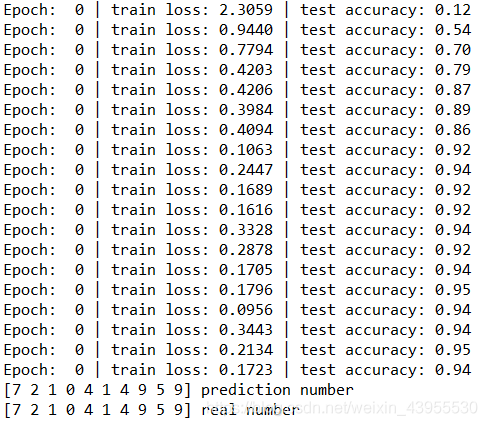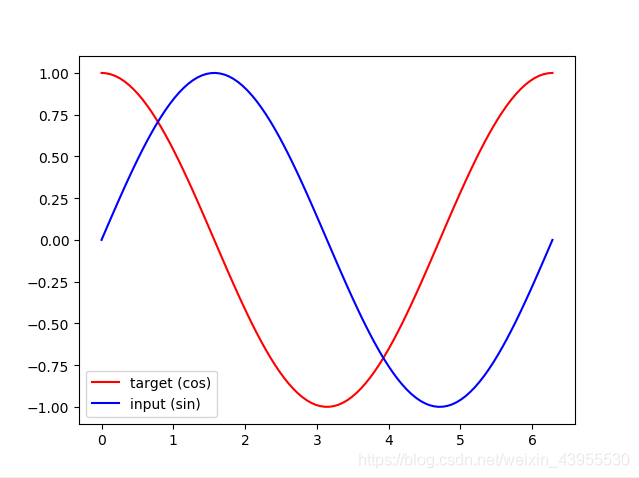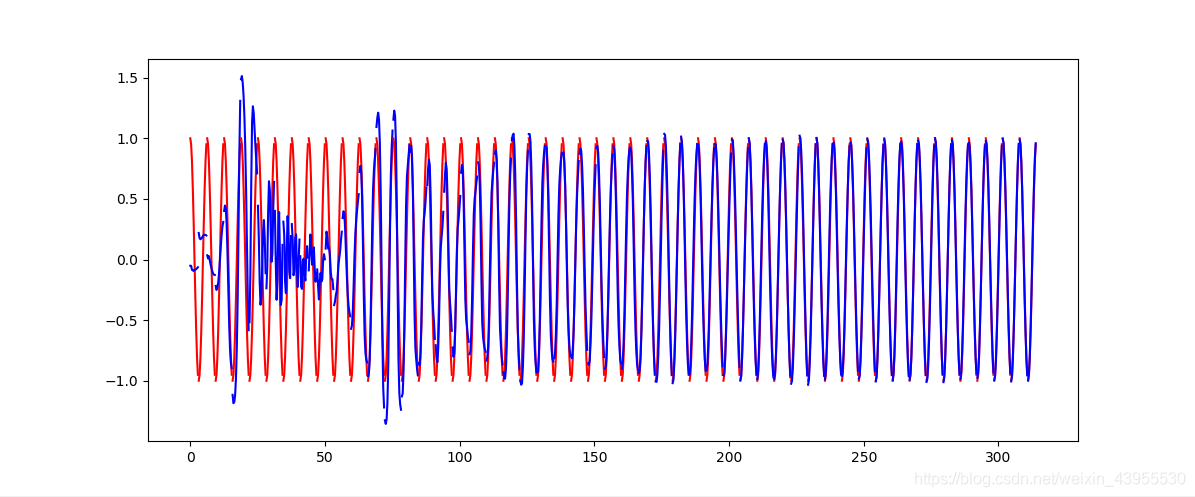RNN实现分类问题
import torch
import torch.nn as nn
from torch.autograd import Variable
import torchvision.datasets as dsets #包括了一些数据库,图片的数据库也包含了
import torchvision.transforms as transforms
import matplotlib.pyplot as plt
#超参数
EPOCH = 1
BATCH_SIZE = 64
TIME_STEP = 28 #rnn time step-->image height
INPUT_SIZE = 28 #rnn input size-->image width
LR = 0.01
DOWNLOAD_MNIST = False #已经下载好了,download设置成false
#准备训练数据
train_data = dsets.MNIST(
root = r'D:\python\minist', #存储路径
train = True,
transform = transforms.ToTensor(), #把下载的数据改成Tensor形式
#把(0-255)转换成(0-1)
download = DOWNLOAD_MNIST #如果没下载就确认下载,如果已经下载了就填False
)
#把train_data变成train_loader,训练起来比较有效率
train_loader = torch.utils.data.DataLoader(dataset = train_data,batch_size = BATCH_SIZE,shuffle = True)
#准备测试数据
test_data = dsets.MNIST(
root = r'D:\python\minist', #存储路径
train = False, #提取测试集不是训练集了
transform = transforms.ToTensor(), #把下载的数据改成Tensor形式
#把(0-255)转换成(0-1)
)
test_x = Variable(test_data.test_data,volatile = True).type(torch.FloatTensor)[:2000]/255
test_y = test_data.test_labels.squeeze()[:2000]
#建立RNN神经网路
class RNN(nn.Module):
def __init__(self):
super(RNN,self).__init__()
self.rnn = nn.LSTM( #nn.RNN没有nn.LSTM效果好,收敛快
input_size = INPUT_SIZE,
hidden_size = 64,
num_layers = 1, #中间只有一层神经层
batch_first = True, #把batch_size参数放在第一个维度(batch,time_step,input)
)
self.out = nn.Linear(64,10)
#三维数据展平成2维数据
def forward(self,x):
r_out,(h_n,h_c) = self.rnn(x,None) #x-->(batch,time_step,input_size)
#在这里分类问题不涉及(h_n,h_c),传入的是None
out = self.out(r_out[:,-1,:]) #r_out-->(batch,time_step,input)
#选取最后一个时间的out作为评价
return out
rnn = RNN()
print(rnn)

RNN网络只有一个LSTM层一个输出层,LSTM有64个神经元
#优化器
optimizer = torch.optim.Adam(rnn.parameters(),lr = LR)#优化器
loss_func = nn.CrossEntropyLoss()#计算损失函数
#CrossEntropy在torch中定义的不是onehot类型的,是int型的标签,标签是7就是7
#训练过程
for epoch in range(EPOCH):
for step, (x,y) in enumerate(train_loader): # 分配 batch data, normalize x when iterate train_loader
b_x = Variable(x.view(-1,28,28)) #reshape x to (batch,time_step,input_size)
#view设置不能缺参数,设置为-1表示自动判断,给出后面两维的大小28,28,自动判断前面的数
b_y = Variable(y) #batch y
output = rnn(b_x)
loss = loss_func(output,b_y)
optimizer.zero_grad()
loss.backward()
optimizer.step()
#打印出来训练效果
if step % 50 == 0:
test_output = rnn(test_x)
pred_y = torch.max(test_output,1)[1].data.numpy().squeeze()
accuracy = float((pred_y == test_y).sum()) / float(test_y.size(0))
#算括号里的是否等于,等于表示预测对了记一次,总共对的次数除以总数就是accuracy
print('Epoch: ',epoch,'| train loss: %.4f' % loss.data[0],'| test accuracy: %.2f' % accuracy)
#拿测试集前十个数据测试一下效果
test_output = rnn(test_x[:10].view(-1,28,28))
pred_y = torch.max(test_output,1)[1].data.numpy().squeeze()
print(pred_y,'prediction number')
print(test_y[:10].numpy(),'real number')

RNN实现回归问题
目标是给出一个sin分布的值,来预测一个cos分布的值,就是给出sin上面的一个y值,预测cos上面的值是多少

import torch
from torch import nn
from torch.autograd import Variable
import numpy as np
import matplotlib.pyplot as plt
# Hyper Parameters
TIME_STEP = 10 # rnn time step
INPUT_SIZE = 1 # rnn input size
LR = 0.02 # learning rate
## show data
#steps = np.linspace(0, np.pi*2, 100, dtype=np.float32) # float32 for converting torch FloatTensor
#x_np = np.sin(steps)
#y_np = np.cos(steps)
#plt.plot(steps, y_np, 'r-', label='target (cos)')
#plt.plot(steps, x_np, 'b-', label='input (sin)')
#plt.legend(loc='best')
#plt.show()
class RNN(nn.Module):
def __init__(self):
super(RNN, self).__init__()
self.rnn = nn.RNN(
input_size=INPUT_SIZE,
hidden_size=32, # rnn hidden unit
num_layers=1, # number of rnn layer
batch_first=True, # input & output will has batch size as 1s dimension. e.g. (batch, time_step, input_size)
)
self.out = nn.Linear(32, 1)
#rnn在同一时间点上input和output都应该是1
def forward(self, x, h_state):
# x (batch, time_step, input_size)
# h_state (n_layers, batch, hidden_size)
# r_out (batch, time_step, hidden_size)
r_out, h_state = self.rnn(x, h_state) #此时的h_state表示为之前网络情况的记忆
outs = [] # save all predictions
for time_step in range(r_out.size(1)): # calculate output for each time step
outs.append(self.out(r_out[:, time_step, :]))
return torch.stack(outs, dim=1), h_state
rnn = RNN()
print(rnn)
optimizer = torch.optim.Adam(rnn.parameters(), lr=LR) # optimize all cnn parameters
loss_func = nn.MSELoss()
h_state = None # for initial hidden state
#最先开始的hidden state没有输入的state,自然也不能通过前面的state算出来当状态下的state,所以初始state直接设定为None
plt.figure(1, figsize=(12, 5))
plt.ion() # continuously plot
for step in range(100):
start, end = step * np.pi, (step+1)*np.pi # time range
# use sin predicts cos
steps = np.linspace(start, end, TIME_STEP, dtype=np.float32, endpoint=False) # float32 for converting torch FloatTensor
x_np = np.sin(steps)
y_np = np.cos(steps)
x = torch.from_numpy(x_np[np.newaxis, :, np.newaxis]) # shape (batch, time_step, input_size)
y = torch.from_numpy(y_np[np.newaxis, :, np.newaxis])
prediction, h_state = rnn(x, h_state) # rnn output
# !! next step is important !!
h_state = Variable(h_state.data) # repack the hidden state, break the connection from last iteration
loss = loss_func(prediction, y) # calculate loss
optimizer.zero_grad() # clear gradients for this training step
loss.backward() # backpropagation, compute gradients
optimizer.step() # apply gradients
# plotting
plt.plot(steps, y_np.flatten(), 'r-')
plt.plot(steps, prediction.data.numpy().flatten(), 'b-')
plt.draw(); plt.pause(0.05)
plt.ioff()
plt.show()

版权声明:本文为weixin_43955530原创文章,遵循 CC 4.0 BY-SA 版权协议,转载请附上原文出处链接和本声明。